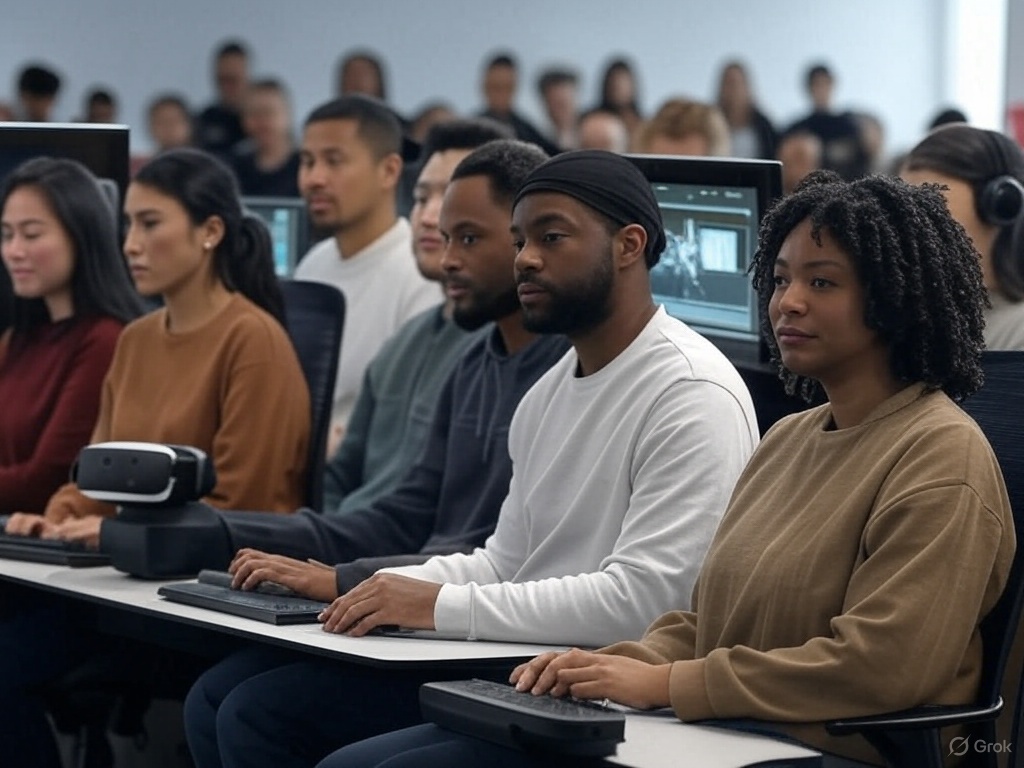According to a16z, 2025 will usher in the second wave of faceless creators, transforming the content creation landscape.
Advances in AI are dismantling traditional barriers, enabling anyone with a story to captivate global audiences—without ever showing their face. But what does this mean for creators and viewers, and how will it reshape the digital world?
The Evolution of Content Creation
 In the past, breaking into content creation demanded significant investment: high-end cameras, microphones, lighting, and editing software. Now, AI is leveling the playing field.
In the past, breaking into content creation demanded significant investment: high-end cameras, microphones, lighting, and editing software. Now, AI is leveling the playing field.
Tools can enhance audio quality, generate realistic backgrounds, or even create artificial voices and faces.
Translation algorithms allow creators to instantly dub videos into multiple languages, unlocking access to worldwide audiences. The result? A lower barrier to entry, making content creation cheaper, faster, and more accessible than ever.
Also read:
- A Guide to Crafting Emotionally Resonant and Relatable Content
- B2B Content Marketing Strategy Designed to Generate Leads and Sales
What’s Changing for Creators?
- Lower Barriers to Entry: Aspiring creators no longer need expensive gear or technical expertise. AI-driven tools streamline production, allowing anyone with an idea to compete with established influencers.
- Embracing Anonymity: Faceless creators can craft compelling content without revealing their identity. Whether through AI-generated avatars or voiceovers, anonymity is becoming a mainstream choice, empowering those who value privacy or want to experiment with creative personas.
- Global Reach: Real-time translation tools break down language barriers, enabling creators to connect with diverse audiences effortlessly.
What’s Changing for Viewers?
 For audiences, the rise of faceless creators offers both opportunities and challenges:
For audiences, the rise of faceless creators offers both opportunities and challenges:
- More Diverse Content: With more creators entering the space, viewers can expect a broader range of perspectives and niche content tailored to their interests.
- Blurring Lines of Authenticity: As AI-generated voices, faces, and translations become indistinguishable from reality, viewers may struggle to discern what’s genuine. The risk of misinformation and deepfakes looms larger, demanding greater media literacy.
- A Shift in Expectations: As faceless content proves its value, audiences may care less about seeing a “real” person on screen and more about the quality and relevance of the content itself.
The Big Question: Does a Face Matter?
 The second wave of faceless creators raises a profound question: if the content is engaging and valuable, does it matter whether there’s a recognizable face or voice behind it? For many, the answer is no. A faceless creator’s ability to inform, entertain, or inspire can outweigh the need for personal authenticity.
The second wave of faceless creators raises a profound question: if the content is engaging and valuable, does it matter whether there’s a recognizable face or voice behind it? For many, the answer is no. A faceless creator’s ability to inform, entertain, or inspire can outweigh the need for personal authenticity.
However, the growing prevalence of AI-generated content amplifies the challenge of combating misinformation. Viewers will need to sharpen their critical thinking to navigate a world where “truth” is harder to verify.
The Future of Faceless Creation
 The second wave of faceless creators is poised to democratize content creation, empowering a new generation of storytellers. For creators, it’s an era of unprecedented opportunity to experiment, innovate, and reach global audiences without breaking the bank.
The second wave of faceless creators is poised to democratize content creation, empowering a new generation of storytellers. For creators, it’s an era of unprecedented opportunity to experiment, innovate, and reach global audiences without breaking the bank.
For viewers, it’s a chance to explore richer, more diverse content—but with the responsibility to question what they see and hear.
As AI continues to blur the lines between real and artificial, the heart of content creation remains unchanged: it’s about connection, creativity, and impact. In 2025, the face behind the screen may fade, but the stories will shine brighter than ever.






